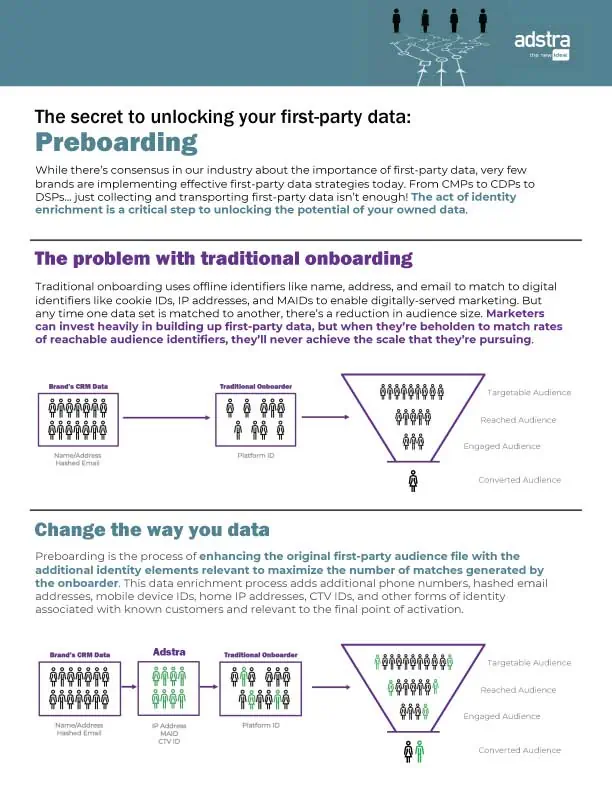Preboarding
by Bryan MacDonald
EVP, Head of Product
& Digital Operations

'Preboarding' is the secret to unlocking first-party data
Case Study - Preboarding on "TikTok"
While there’s consensus on the importance of first-party data, very few organizations are building and implementing effective first-party data strategies right now. Part of the issue is that brands actually need to do things with their first party data after they collect it. They need to move it from their CMPs and CDPs into other marketing platforms to ensure that they can effectively reach both customers and prospects, and they need to do this with some speed.
Just as important, brands need to actually find and categorize new customers and prospects across media, which isn’t always possible with a Brand’s collected first-party data by itself. This includes not only their recognized customer base, but also the unknown audiences such as the anonymous website visitor that often has associated with it vast unactionable first party data. Simply “relying” on the collected consumer identifiers collected on their first-party data isn’t going to get brands very far.
This can all change with a few minor updates to the processes that exist today. The act of identity data enrichment has perhaps never been more important, provided that brands do this task before they onboard their first-party data either directly into a media channel or through a “data onboarder”. This process – call it “preboarding” – is critical for getting the scale and reach that makes first-party data effective.
Increasing Scale
At this moment, advertisers are taking stock of their first party data and figuring out how they can take in even more to increase their audience understanding and scale. In order to use this first-party data, some of which comes from offline sources, advertisers often need to enlist an onboarding partner.
In the current construct, brands share their audience files with an onboarder, which will then recognize some of the customers within the file based on the limited identity data the brand currently has been able to collect from their prospects and customers. Traditionally onboarding was from PII to browser Cookies for Digital Media activation via DSPs. Name and address and email address were the “match keys” for onboarding to cookies. Now Digital Media is also targetable on TVs, game consoles, mobile apps etc in addition to web browsers. The identity keys required to onboard to these newer digital media platforms are frequently not name and address or email address but can be home IP, APP or platform IDs, mobile device IDs, CTV IDs, and more being added every day. Any or all of these identifiers may be needed to link customer profiles to digital identifiers and improve the ability to deliver targeted marketing materials to known consumers across channels.
There are obvious drawbacks. Any time data must be matched against another set, there’s a reduction in audience size. Marketers can invest heavily in building up first-party data, but when they are beholden to match rates of their customers to reachable audience identifiers, they’ll never achieve the scale that they’re pursuing.
Preboarding is the process of enhancing the original first-party audience file with the additional identity elements relevant to maximize the number of matches generated by the onboarder. This data enrichment process adds additional phone numbers and hashed email addresses, mobile device IDs, home IP addresses, CTV IDs, and other forms of identity associated with known customers and relevant to the point or points of activation.
The process after this is exactly what brands are used to. They can take that newly expanded matched audience from the onboarder and use it across marketing channels, moving customers through the same funnel they’re used to. The level of performance through the funnel should stay consistent given matching is typically not biased across an audience, thus preboarding has simply widened the existing marketing funnel at the top driving an expanded audience scale.
Enable 1st Party data in New Media Options
Because of the expanded identity options, preboarded data is also far easier to move across the marketing landscape, including newer focus areas like CTV and data clean rooms, because it’s already enriched and carrying the scale that marketers want to see before they execute a campaign. Traditional website retargeting allows you to reach back out to anonymous visitors via a display retargeting partner, Preboarding allows these anonymous visitors to have additional identifiers appended to them for onboarding to other media channels not reliant on cookies like MVPDs and CTV platforms as well as social platforms like Facebook and Tik Tok. Marketing technologies are all based on a starting identity. Preboarding simplifies the translation from any starting identity in one media to the starting identity in another.
Preboarding may seem like an extra step in what is already a complicated process for some marketers. However, there’s a lot at stake when it comes to first-party data strategy. Brands are investing heavily in collecting and connecting their customer data. To fully realize a return on that investment, brands need their data to drive marketing outcomes that in turn drive revenue. Enrichment and preboarding can drive reach, turning a profit on the investment made in first-party data. And while the focus is on deriving greater value from first-party data, the benefits of preboarding extend to second- and third-party audience data as well, enabling higher returns on a brand’s prospecting efforts as well.
If everybody was preboarding before they onboarded, marketers would be able to unlock far for value from their 1st Party data across all their marketing efforts. As cookies and other components in the onboarding process degrade, it’s more important than ever for marketers to start experimenting with the preboarding process.



